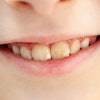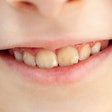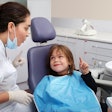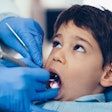Global oral health problems among adolescents and young adults may have become more common and more disabling due to rising rates of periodontitis and tooth loss. This study was published recently in BMC Oral Health.
Furthermore, these issues remain a major concern in both high- and low-resource countries, the authors wrote.
"The prevalence and disability-adjusted life years (DALYs) of oral disorders among AYA (adolescents and young adults) have risen over the past three decades," wrote the authors, led by Xingzhu Dai of the Southern Medical University in China (BMC Oral Health, April 4, 2025, Vol. 25, 486).
This observational epidemiological study examined the yearly prevalence and DALYs linked to oral disorders, including caries, periodontitis, and tooth loss among adolescents and young adults ages 10 to 24 from 1990 to 2021.
Using data from the Global Burden of Disease Study 2021, the researchers calculated estimated annual percentage changes (EAPCs) in age-standardized prevalence and DALY rates at global, regional, and national levels. Also, the study incorporated sociodemographic index (SDI) data from 204 countries and territories, they wrote.
Between 1990 and 2021, the global number of oral disorder cases rose by 17.1% from 549 million to 643 million, while DALYs increased by 22%, from 1.4 million to 1.7 million. During this time, the age-standardized prevalence rate slightly declined (EAPC = -0.07), whereas the age-standardized DALY rate showed a modest increase (EAPC = 0.06).
Although the burden of caries decreased, cases of periodontitis and tooth loss grew significantly. Additionally, age-standardized prevalence and DALY rates were negatively correlated with the SDI, while the EAPC of DALY rates showed a positive correlation with SDI, they wrote.
Regional differences were found in the prevalence and DALYs of oral disorders, with the fastest increases in age-standardized prevalence rates in Southern Latin America and the fastest increases in age-standardized DALY rates occurring in South Asia. The most significant growth in these rates was recorded in Southern Latin America (EAPC = 0.11), Australasia (EAPC = 0.73), and South Asia (EAPC = 3.25).
However, the study had limitations. It used national and regional data, which may overlook local differences in oral health outcomes, the authors added.
"Global efforts to reduce the burden of oral disorders remain critical," they concluded.




















